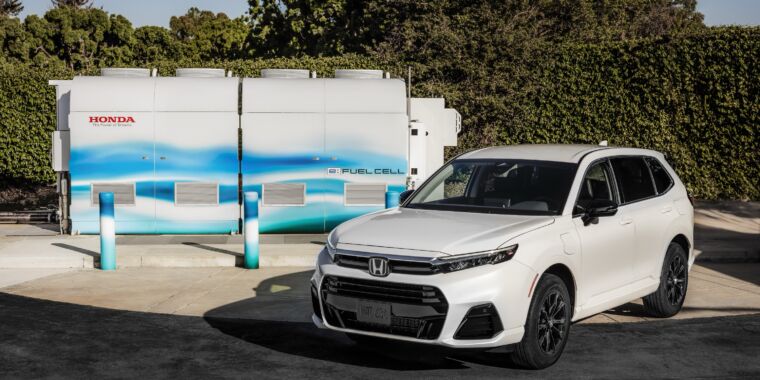Honda Introduces Hydrogen-Fueled Vehicle in US
Hydrogen as a fuel source for light passenger vehicles faces challenges in the US, primarily due to an underdeveloped refueling infrastructure, especially outside of California where retail hydrogen stations are scarce. Furthermore, hydrogen prices are volatile, reaching up to $33 per kilogram, making it an unreliable choice. Despite these obstacles, Honda is launching a new hydrogen fuel cell vehicle in the US market, the CR-V e:FCEV.
Unique Features of the CR-V e:FCEV
The most intriguing aspect of the fuel cell CR-V is its design as a plug-in hybrid. Unlike conventional hybrids that pair an internal combustion engine with an electric drivetrain, this vehicle integrates a fuel cell that powers a 17.7 kWh battery pack along with a traction motor resembling those found in electric vehicles. Honda’s innovative approach is aimed at promoting hydrogen as a viable fuel option not only for passenger vehicles but also for heavy-duty vehicles, agriculture, and stationary backup power systems.
The CR-V e:FCEV’s powertrain configuration includes a 17.7 kWh battery complemented by a front-mounted electric motor generating 174 hp (130 kW) and 229 lb-ft (140 Nm) of torque. Although its performance does not match that of the standard hybrid model, Honda emphasizes the vehicle’s potential impact on advancing hydrogen fuel cell technology.
Performance and Efficiency
The collaboration between Honda and General Motors resulted in a more efficient fuel cell system for the CR-V e:FCEV, promising a range of 270 miles (434 km) on a full tank of hydrogen and a fully charged battery. The enhanced durability of the new fuel cell, incorporating corrosion-resistant materials, is expected to outperform previous iterations in vehicles such as the Clarity FCV.
Despite concerns surrounding fuel availability and long-term viability, the driving experience of the CR-V e:FCEV mirrors that of the traditional CR-V, albeit with minor variations. The vehicle’s weight, 500 lbs (227 kg) heavier than the US CR-V Hybrid, contributes to a more substantial and stable feel on the road, compensating for slower response times in handling.
Braking performance, while requiring additional pressure on the pedal due to the vehicle’s weight, benefits from regenerative braking features controlled by intuitive metal paddles on the steering wheel. These adjustments, though not enabling one-pedal driving, enhance the overall driving experience of the CR-V e:FCEV.
Image/Photo credit: source url





